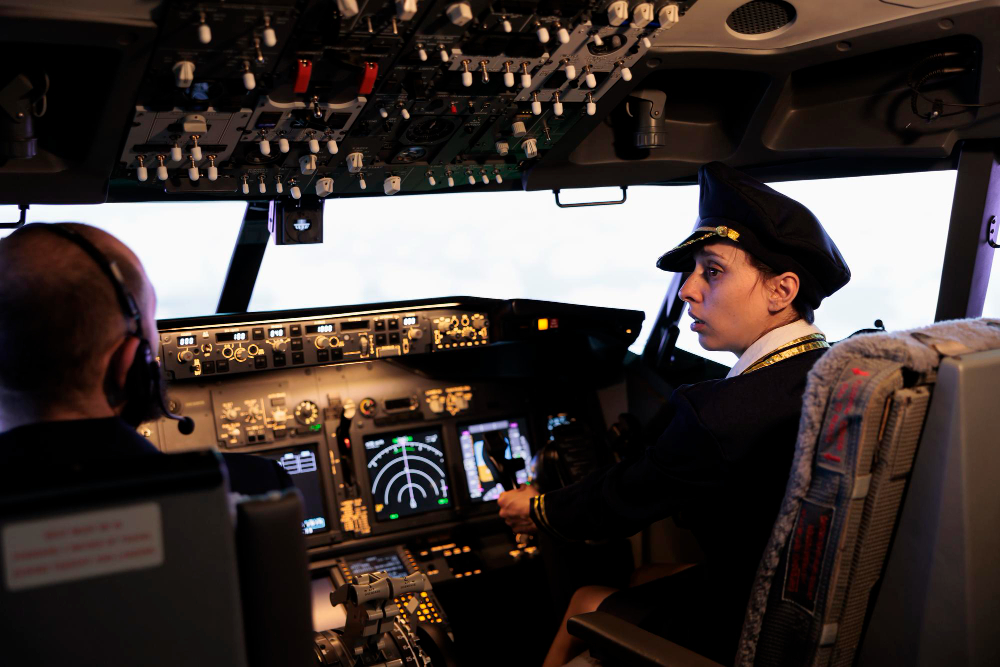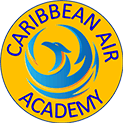Aviation Training: From Ground School to Cockpit

Ever looked up at a plane soaring through the sky and dreamed of being in the cockpit? Turning that dream into a reality is more achievable than you might think. The journey to becoming a pilot is a structured process involving both theoretical knowledge and practical flying skills. It demands dedication, but the reward is a career with unparalleled freedom and adventure.
This guide will walk you through the entire process of aviation training, from the initial stages of ground school to the moment you take command of an aircraft. We'll cover the different types of pilot licenses, the key stages of training, and what it takes to succeed. Plus, we’ll explore why a location like the Bahamas can offer a unique and beautiful backdrop for your flight education.
Understanding the Different Pilot Licenses
Before you begin your aviation training, it's important to understand the different types of licenses you can obtain. Each one opens up different opportunities and has its own set of requirements.
Private Pilot License (PPL)
A Private Pilot License is the first major milestone for most aspiring pilots. With a PPL, you can fly an aircraft for personal reasons, such as recreation or transportation, but you cannot be paid for your flying services. This license allows you to carry passengers, making it perfect for those who want to share their passion for flying with friends and family. The training focuses on fundamental flying skills, navigation, and safety procedures.
Commercial Pilot License (CPL)
If your goal is to fly for a living, you'll need a Commercial Pilot License. A CPL allows you to be compensated for your work as a pilot. The training for this license is more rigorous than for a PPL, requiring more flight hours and a deeper understanding of advanced aerodynamics, aircraft systems, and commercial operations. Earning a CPL opens doors to careers like being a charter pilot, flight instructor, or aerial tour guide.
Airline Transport Pilot License (ATPL)
The Airline Transport Pilot License is the highest level of pilot certification. An ATPL is required to act as the captain or first officer of a large commercial airline. The requirements for this license are the most stringent, demanding extensive flight experience (typically at least 1,500 hours) and a comprehensive knowledge of all aspects of aviation.
The Stages of Aviation Training
The path to becoming a pilot is broken down into distinct stages, ensuring you build a solid foundation of knowledge and skill.
1. Ground School: The Theoretical Foundation
Every pilot's journey begins on the ground. Ground school is where you'll learn the essential theoretical knowledge needed to fly safely and effectively. The curriculum is comprehensive and covers a wide range of subjects, including:
- Aerodynamics: Understanding how an aircraft flies.
- Aircraft Systems: Learning about the engines, electrical systems, and controls of your plane.
- Meteorology: How to read weather charts and make safe flying decisions.
- Navigation: Using charts, instruments, and landmarks to plan and execute flights.
- Regulations: Familiarizing yourself with the rules of the sky set by aviation authorities like the FAA.
Ground school can be completed through in-person classes, online courses, or self-study programs. At the end of this stage, you must pass a written knowledge test to demonstrate your understanding of these core concepts.
2. Flight Training: Taking to the Skies
Once you have a solid grasp of the theory, it’s time for the most exciting part: flight training. Under the guidance of a Certified Flight Instructor (CFI), you will learn how to handle an aircraft. This hands-on experience is divided into several phases:
- Pre-Solo: You'll learn basic maneuvers like taking off, landing, turning, and climbing. Your instructor will be with you every step of the way, providing guidance and feedback.
- First Solo Flight: This is a major milestone for every student pilot. After your instructor deems you ready, you will take off, fly a pattern around the airport, and land all by yourself. It’s an unforgettable experience that marks your transition from student to solo pilot.
- Cross-Country Flying: After your first solo, you'll start learning to fly longer distances. This involves navigating between different airports, managing fuel, and making decisions independently.
- Checkride Preparation: The final phase of flight training involves preparing for your practical exam, known as the checkride. You'll practice advanced maneuvers and emergency procedures to ensure you're ready to handle any situation.
3. The Checkride: Earning Your Wings
The checkride is the final exam to earn your pilot license. It is conducted by a Designated Pilot Examiner (DPE) and consists of two parts: an oral exam and a practical flight test.
- Oral Exam: The examiner will ask you questions about the topics you covered in ground school to test your theoretical knowledge.
- Flight Test: You will then take the examiner flying and demonstrate your ability to perform various maneuvers and procedures safely and competently.
Passing the checkride is the culmination of all your hard work and the moment you officially become a licensed pilot.
Why Choose the Bahamas for Your Aviation Training?
Where you choose to learn to fly can have a big impact on your training experience. While many excellent flight schools exist worldwide, aviation training in the Bahamas offers some unique advantages.
The weather is one of the biggest benefits. With over 300 sunny days a year, the Bahamas provides ideal flying conditions, minimizing cancellations and allowing you to complete your training more efficiently. The crystal-clear skies and stunning turquoise waters also make for breathtaking views from the cockpit, turning every training flight into a memorable experience.
Furthermore, flying in the Bahamas gives you valuable experience with island and over-water flying, skills that are highly sought after in many aviation careers. Navigating between the various islands helps you hone your cross-country planning and navigation abilities in a beautiful, real-world setting.
Take the First Step Toward the Cockpit
Becoming a pilot is a challenging but incredibly rewarding journey. It requires dedication, perseverance, and a passion for flying. By following the structured path of ground school, flight training, and examinations, you can turn your dream of flight into a reality.
If you are serious about pursuing a career in aviation and are intrigued by the idea of training in a tropical paradise, consider your options in the Bahamas. If you're interested in aviation training in the Bahamas, contact Caribbean Air Academy today to get started and take the first step on your path to the cockpit.
